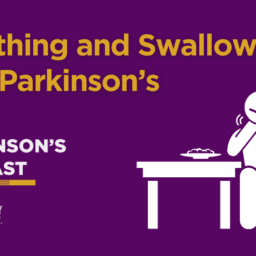“Recently, I’ve noticed that I have uncontrollable sugar cravings.”
“I look down at my shopping cart and see chocolate, ice cream, candy, and soda.”
“I never used to want dessert, but now I eat it every day.”
Is craving sugar a symptom of Parkinson’s? Does it have to do with medication? Is it a sign that you’re not getting the nutrients you need? Let’s dive in.
Diet and Parkinson’s
We know that not everyone responds the same when it comes to medication. The same is true when it comes to specific diets. Some people do great on a raw vegan diet; others prefer and experience better results with Keto. Some people experience a reduction of symptoms when they practice intermittent fasting; others swear by the Mediterranean diet. However, no matter what nutritional plan you choose, they all have one thing in common – the goal of reducing or eliminating sugar intake.
Blood sugar, the microbiome, and Impulse Control Disorders (ICDs)
Processed sugar is everywhere. (And there are more than 56 names for sugar in the foods you eat.) It’s in things like candy, cake, cookies, and other treats, but it’s also in bread, some nut butter, salad dressing, ketchup, cereal, and more. That doesn’t mean you should stop eating those things but paying attention to how sugar might be sneaking into your daily diet is important. After all, a 2006 study showed that people with Parkinson’s scored higher than controls on sugar cravings. Another recent study done in 2021 found that increased sugar consumption is highly prevalent among people with Parkinson’s.
Why does this happen?
Some evidence suggests that the microbiome may be involved. For example, many gut microbiotas use sugar as an energy source. Since there is strong evidence that the microbiome and Parkinson’s are related, it is possible that the gut microbiota’s need for sugar contributes to feelings of sugar craving. However, this phenomenon is not yet well-understood, and more research is required to yield direct links between the two.
Research also suggests a link between blood sugar and Parkinson’s. One of the most common Parkinson’s symptoms is fatigue, but evidence suggests you can help manage fatigue by keeping your blood sugar stable throughout the day. Beyond that, researchers found that when people with Parkinson’s kept their blood sugar stable by not letting it get too high or too low, their motor symptoms didn’t progress as quickly. They also found that there may be an association between limiting sugar intake and slowing cognitive decline. Because Type II diabetes increases your risk of developing Parkinson’s and can negatively affect motor progression if you already have Parkinson’s, it’s a good idea to control your blood sugar levels. Not only can keeping blood sugar levels stable help with physical fitness, body image, and mental health, but it can also minimize Parkinson’s symptoms.
Another possible symptom of Parkinson’s that you may have heard of is experiencing impulse control disorders (ICD). Some common examples of ICDs include gambling, impulsive shopping, and hypersexual behavior. One less-recognized example is food addiction. A recent study found that people with Parkinson’s may have more eating disorders – particularly food addiction and night eating syndrome – than control participants. ICDs are linked to dopamine availability in your brain, so taking certain medications like dopamine agonists can increase the risk of ICDs. Therefore, your challenges with sugar consumption may be related to Parkinson’s and dopamine availability, though more research is necessary.
Combatting sugar cravings
If you want to manage your sugar cravings more effectively and reduce your sugar intake, the good news is that there are resources that can help. One thing to consider is adding a registered dietician (RD) to your care team. They can give you advice about foods to incorporate into your diet and those to avoid and can be a great person to lean on when you’re learning which foods may improve or worsen your Parkinson’s symptoms.
If you believe your relationship with food is negatively impacting your quality of life, you may also consider consulting a therapist, particularly one with experience treating people with eating disorders. They can give you mental and behavioral strategies to help you cope with cravings and form new habits. It’s also essential to build a solid support system around you. When you’re struggling to make changes or want to share successes, your care partner, friends, family, and support groups can all be great resources to turn to.
Finally, you can also make changes to the food you eat. Sometimes sugar cravings result from a lack of satiety. Consider adding more healthy fats to your diet before reaching for sugar. The more you eat unhealthy carbohydrates, sugary cereals, traditional sweets, and processed foods, the more your body will expect and crave a sugar fix. Once you start to get your satiety and cravings in check, a small piece of dark chocolate, some fruit, or a keto dessert will give you the sugar fix you’re after without inducing too big of a spike in your blood sugar. Once you realize how good you feel, how much better food tastes when you’re not chasing sugar, and how influential your diet is on your Parkinson’s symptoms, choosing healthier and more satisfying food choices will be easy.
The bottom line
Sugar cravings for people with Parkinson’s are complicated, and there’s no one-size-fits-all plan for reducing sugar. Some people go cold turkey and never look back. Some make substantial changes and then occasionally add in a treat here and there. You have to find what works for you. Just know that you can take control of your nutritional choices, and the better you eat, the better you’ll feel.
Want to learn more about NUTRITION and parkinson’s?
Visit our nutrition topic page here for more tips and tricks on how to live well with Parkinson’s.

















